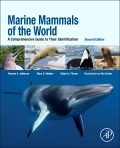Welcome
Welcome to the website for Keene, Yoshizawa, McGaugh: Biology and Evolution of the Mexican Cavefish.
Biology and Evolution of the Mexican Cavefish features contributions by leading researchers in a comprehensive, unique work that examines a number of distinct areas of biology—ecology, evolution, development, and behavior—using the Mexican cavefish as a powerful model system for further understanding of basic biological processes, such as eye degeneration, non-visual sensing, craniofacial development, sleep, and metabolic function.
Mexican cavefish are currently being used to better understand a variety of issues related to human health, including age-related blindness, obesity, mood-related disorders, and aging. These fish are particularly powerful for the study of biological processes because they evolved independently in at least twenty nine caves in the Sierra de El Abra Region of Northeast Mexico. Their dramatic adaptations to the cave environment and the recent sequencing of the cavefish genome broaden the interest of this system to groups working with diverse biological systems, and has helped researchers identify genes that regulate various processes and disease-related traits.
This scholarly text will interest researchers and students throughout several areas of biology and ecology. Photographs of animals and behavior in both laboratory and natural settings will also increase the interest and accessibility for non-experts.
This site provides the following resources:
- Additional maps of the Sierra de El Abra Region
- Glossary of Mexican, geographic, and geologic terms


